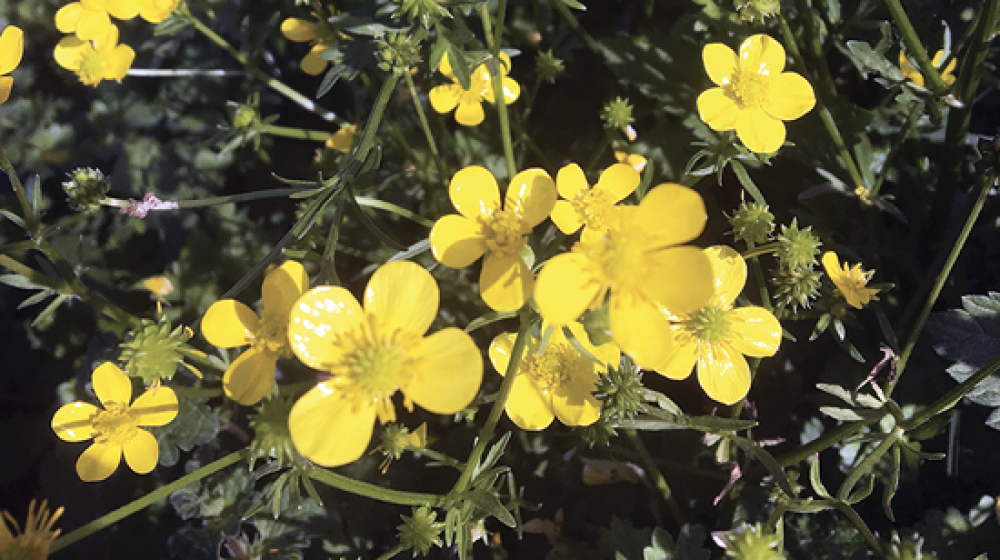Common Winter Weeds

Buttercup is a common winter weed found in Mississippi. (Photo by MSU Extension)
Whether you have a large lawn, field, or pasture, you’ve probably had to deal with pesky weeds. Here are a few common winter weeds you might have noticed growing in lawns, fields, pastures, or alongside roads:
- Buttercup: Yellow weeds are typically the most recognizable type. Buttercup, an annual broadleaf weed, produces shiny, yellow flowers. One thing to note about buttercup is that it produces an irritant oil that can be toxic to all livestock. The best time to control this weed is from late February to early March.
- Common Chickweed: Also known as winter-weed, common chickweed is a long-growing annual broadleaf weed that has light green leaves that are smooth or hairy towards the base of the leaf stalk. One way to easily recognize this weed is by looking at the arrangement of the leaves. The leaves are usually situated the opposite of one another on the stem. Chickweed can also have small white flowers or clusters. The best time to control this weed is in November or mid-February to mid-March.
- Curly Dock: Curly dock weeds look just as the name suggests––curly! Their leaves are dark green with wavy edges. Also known as sour dock or yellow dock, the leaves of the weed turn a reddish purple color with age. The best time to control this weed is from mid-February to late March.
- Cutleaf Geranium: Cutleaf geranium is an annual broadleaf weed, sometimes referred to as wild geranium or cranesbill. The stem of this weed is very hairy, pink in color, and erect with branching near the base. Cutleaf geranium has whitish pink to pale purple flowers that are found at the tips of the stem. The best time to control this weed is late November or mid-February to mid-March.
- Dandelion: Dandelion is one of the most recognizable weeds out there. These aggressive perennial broadleaf weeds start out as bright yellow flower heads that transform into the puffy white seed heads everyone recognizes. The best time to control this weed is from October to November or March to April.
- Musk Thistle: You’ve probably seen this biennial winter weed in grass alongside the road. It almost has a cactus look to it with its dark green prickly leaves. In early summer, flowers bloom at the top of the stem and are pinkish purple in color. The musk thistle can produce up to 100,000 seeds in one season, and the seeds can stay in the area for nearly 10 years! The best time to control this weed is from mid-February to April.
To learn more about winter weeds and how to treat them, check out Extension Publication 3228, “Identifying Common Winter Weeds in Pastures.”
Posted on: January 26, 2024
Subscribe to Extension for Real Life
Fill in the information below to receive a weekly update of our blog posts.
Recent Posts
June 5, 2025
Related News
March 6, 2020
March 12, 2018
September 26, 2014
February 5, 2014
Pages
Related Publications
Publication Number: P2726
Publication Number: P3266
Publication Number: P2880
Publication Number: P3865
Publication Number: P3276









